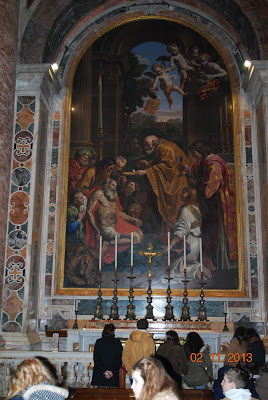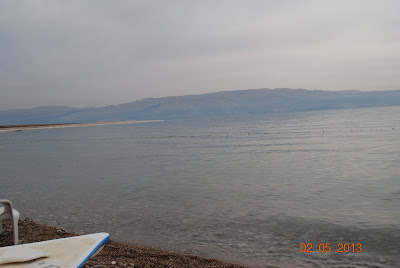Venice is an amazing place which has been around for 1500
years -- very expensive and an island shaped like a fish in a lagoon of the
Adriatic Sea. The population of Venice is 58,000 people which is less than half of what it was three decades ago. In fact, Venice has sunk 9 inches in the past century.
The
Grand Canal which winds like a snake through Venice.
One of the few bridges
across the Grand Canal
We opted to walk across the city filled with 2000 narrow
pedestrian streets and alleyways as well as 400 bridges. Many shops, hotels, restaurants and churches
line these streets. Residents live above
the restaurants and shops. One can’t get
permanently lost there since you are on an island! As
long as you know which site you are wanting to see and follow the painted
arrows at street intersections , you can get around fairly easily.
Narrow Streets
Canals of Venice
We decided against taking a gondola since it was slightly
windy and cool. It is February! We only heard one gondolier singing as he
passed by us. Sounded as if his teeth
might be chattering.
Gondola
on a canal
Gondolier
waiting for customers
Like taxis, Out of
Service
We didn’t just
walk narrow streets and cross bridges.
We also visited churches and palaces.
Venice, during the Middle Ages, became the richest city in the world. It no longer holds that title.
The largest
church and plaza in Venice is St. Mark’s Basilica in the Piazza San Marco. The Basilica is on one end of the Piazza
while on the other end is the Doge Palace.
It was the seat of the Venetian government and the home of its ruling
duke, or Doge. It was the most powerful
half acre in Europe for 400 years.
The
Basilica of St. Mark in Piazza San Marco
The
palace of the Doge (former rulers)
On the back side of the Doge Palace is a prison. There is a bridge across a canal leading into
the prison. It is called the Bridge of
Sighs, because the prisoners who were entering the prison were heard to sigh
because of it being their last few steps of freedom.
I decided it was a good time for me to sigh in front of the Bridge of Sighs because of being dragged through so many art museums and having to
carry so much in my pockets!
The day we were in Venice was Dale’s birthday. Not going to reveal her age but she was born
in 1948!
The Birthday Girl
We took a
river taxi/bus from the opposite end of Venice back to the train station. It gives you a different perspective on the
city than what you get walking through it.
Another
of the bridges over the Grand Canal
A
former palace on the Canal
A
church on the Grand Canal
We stayed in Venice Mestre, which is a town on the
mainland about 2 miles from Venice itself.
Lodging there is significantly cheaper than in Venice as are the
restaurants. We were two blocks from the
train station and the cost to ride to Venice was a little over a dollar
each. The airport is outside Mestre so
it made for an easier trip when we were ready to leave.






































































